Temporomandibular joint pain
Dentysta stomatolog Warszawa Ursynów ADENTIS / Services / Rehabilitation of temporomandibular joints / Temporomandibular joint pain
- joint pain
- headache,
- migraines,
- pops in the joints
- tinnitus
- limitation or loss of mouth opening and others.
Prosthetic rehabilitation – occlusion reconstruction
Reconstruction of damaged tooth fragments and the correct relationship of the jaw to the mandible.
The treatment is not aesthetic treatment. It rebuilds aesthetics but the intention is to restore the physiology of the masticatory system.
According to some statistics, as many as 7 out of 10 people suffer from teeth clenching problems. Jaw clenching is a parafunctional reflex. Unfortunately, it is not seen as a bad habit. Correct tooth contacts are only created when swallowing food or swallowing saliva. The act of swallowing saliva occurs at a frequency of 1,500-2,000 times per 24 hours. During the day, dental contacts are short, about 30 minutes a day.
All other interdental contacts are pathologies that may lead to:
- abrasion of the occlusal surfaces of the teeth, which contributes to a change in the height of the occlusion,
- fractures of tooth crowns,
- changes in the enamel, including: wedge defects (cervical)
- damage to prosthetic crowns,
- increased tooth mobility,
- uncontrolled tooth displacements in the arch,
- apparent tooth eruption,
- Pathologies in the temporomandibular joint (the fibers in the joint lose their elastic properties, are stretched and the articular disc may be distorted)
- growth and hypertrophy of the muscles responsible for chewing, mainly the masseter muscle, may cause visible asymmetry of the lower part of the face.
Occlusal reconstruction also include patients with a bad bite whose loss of hard tooth tissue was caused by poor jaw-to-mandibular relationship.
 |
 |
| Patient’s smile before treatment. | Patient’s smile after treatment. |
 |
 |
| Porcelain veneers. | Porcelain veneers. |
Prosthetic rehabilitation
 |
 |
 |
 |
 |
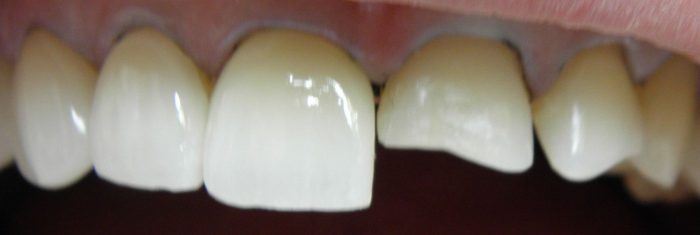 |
| Teeth wear. | Reconstruction of front teeth without grinding. |
 |
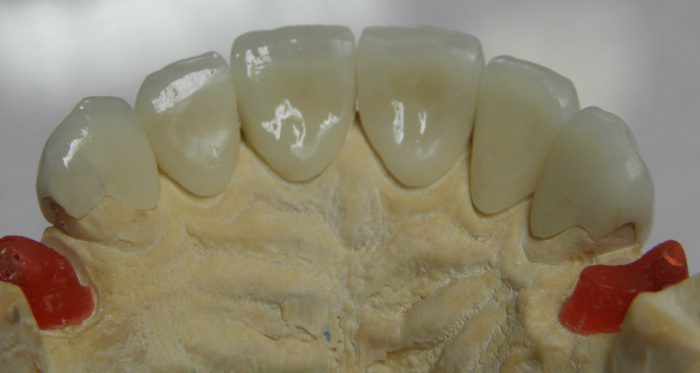 |
| Porcelain veneers. | Porcelain veneers. |
 |
 |
| Destruction of front teeth. | Reconstruction with composite. |
 |
 |
 |
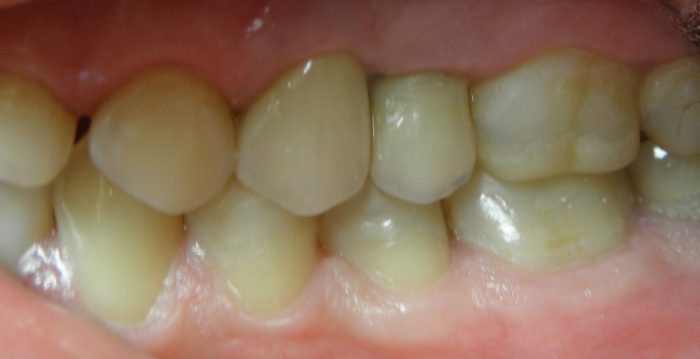 |
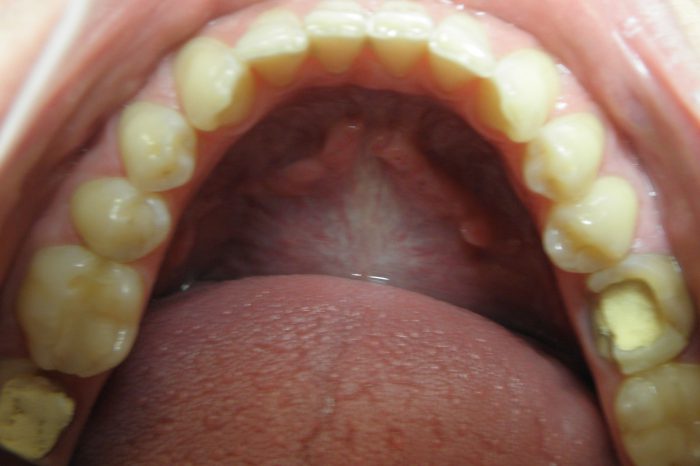 |
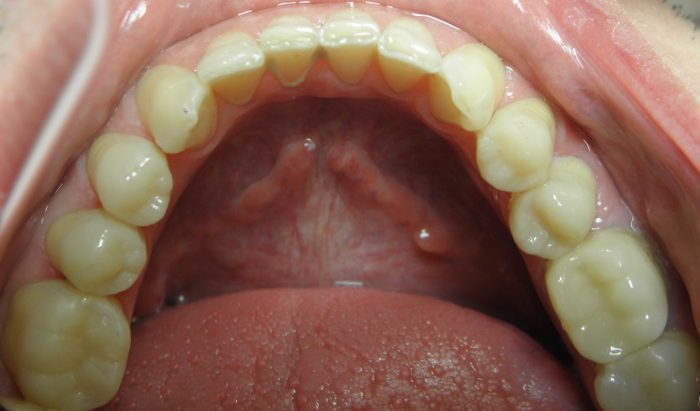 |
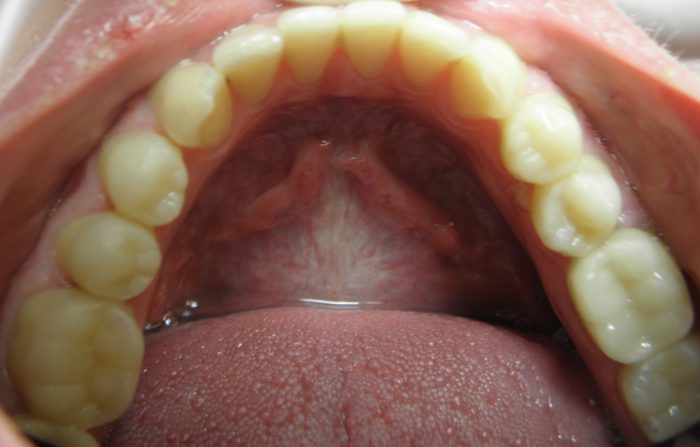 |
| Before treatment. | Rebuilding the sides. | Reconstruction of the sides and front. |
Prosthetic rehabilitation – reconstruction of the occlusion.
 |
 |
| Before treatment. | After treatment. |
 |
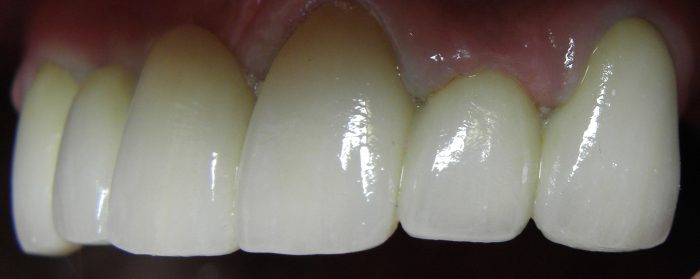 |
| Porcelain Bridge. | Porcelain Bridge. |
 |
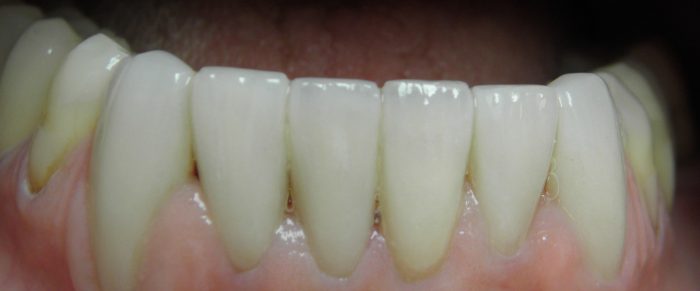 |
| Before treatment. | After treatment – lower teeth equipped with porcelain veneers. |
 |
|
| Before treatment. | Porcelain Bridge. |
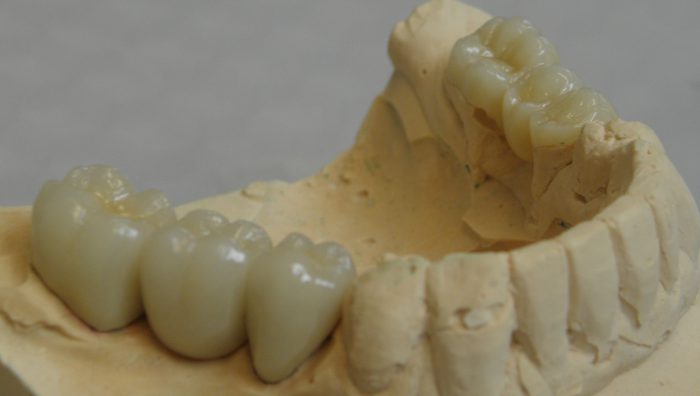 |
 |
 |
|
Bridge on the fiber with lifting of the short circuit.
 |
||
| Before treatment. | Fiber bridge on model. | Bridge without tooth grinding. |
| Is prosthetic work performed in a habitual bite a reasonable treatment plan? Let’s not be afraid to take a broader look. Let’s get the frame right and then deal with the teeth.
An anterior-posterior gap does not always indicate that the mandible is too short. It is often caused by a retraction of the jaw as in this case (compression in the TMJ, auditory symptoms and TMD problems). Patients with such prosthetic reconstructions come to me with craniofacial pain. My patient is 60+ and does not want to have a “Hollywood Smile”. She has not decided to replace her prosthetic restorations. He just wants the pain to go away. Currently, the patient is stable and pain-free. It is not my intention to evaluate such a treatment plan, I would like to show how easily the patient’s bite can be changed. Sometimes it is enough to rebuild the occlusion (with composite or crowns), otherwise I add orthodontic treatment to align the teeth. |
 |
 |



